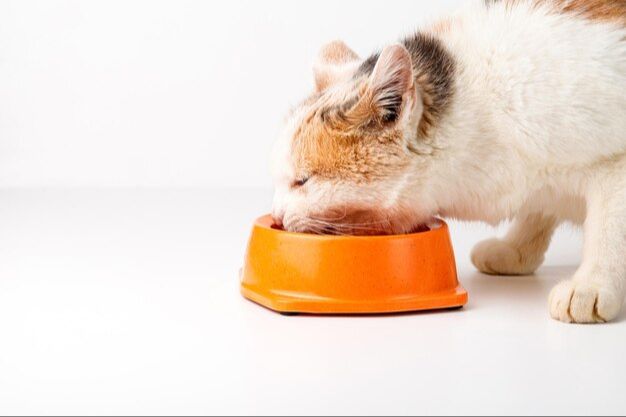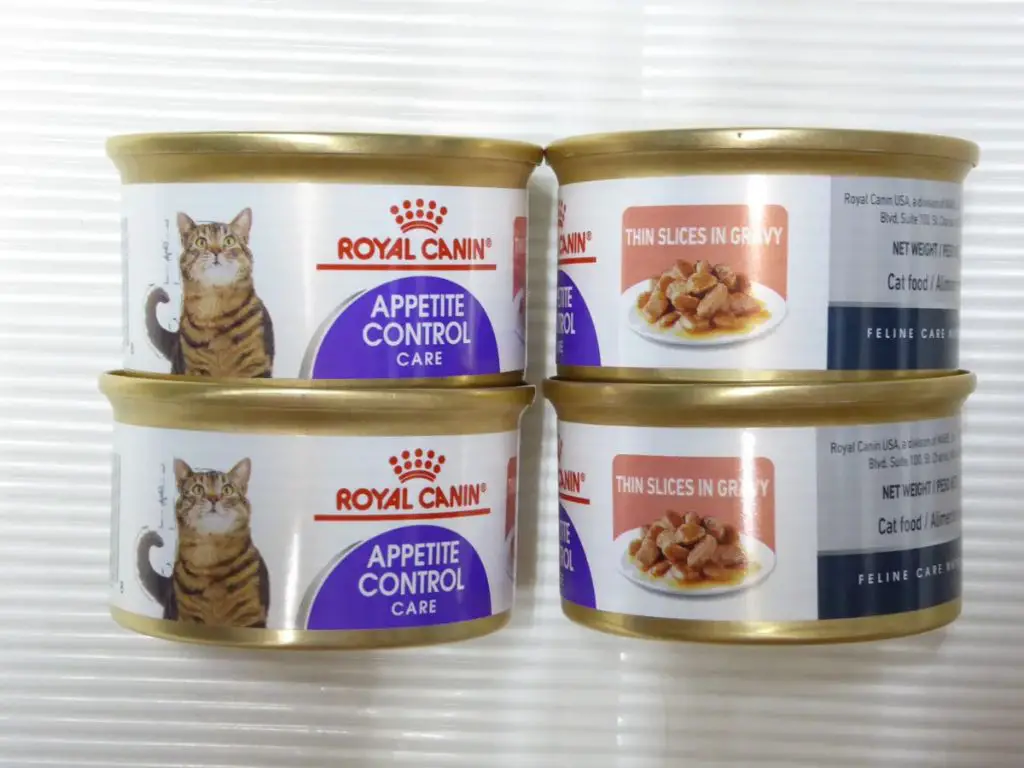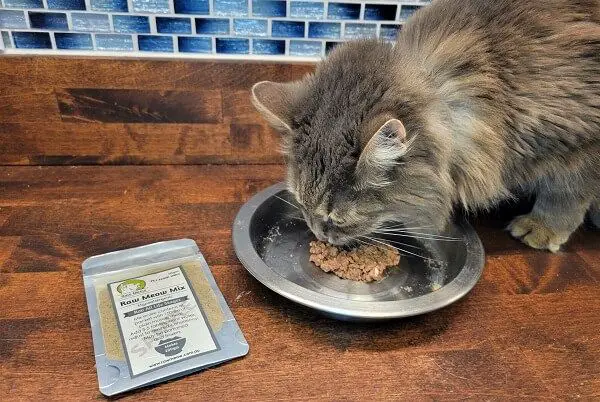Canned or wet cat food often comes in convenient single-serve pouches or cans. Unlike dry kibble, wet food has a relatively short shelf life and needs to be stored properly to avoid spoilage. Knowing if and when wet cat food expires is important for pet owners to avoid wasting food and money. Feeding spoiled cat food can also make your pet sick. This article provides an overview of wet cat food storage, shelf life, expiration dates, and safety to help cat owners optimize freshness and minimize waste.
Understanding proper storage and expiration of canned cat food is an important part of being a responsible pet owner. Storing open cans correctly and discarding food that is past its prime can prevent foodborne illnesses. Additionally, an awareness of expiration dates and signs of spoilage allows owners to avoid wasting usable cat food and money. This guide offers cat owners the information they need to balance cat food freshness and thrift.
Dry vs Wet Cat Food
There are some key differences between dry and wet cat food when it comes to nutritional value, cost, and other factors.
Dry cat food typically contains more carbohydrates and plant-based proteins than wet food. It has a lower moisture content since it is only around 10% water. The kibble helps clean cats’ teeth but is less palatable than wet food for some cats. Dry food costs less per ounce but cats generally need to eat more dry food by volume to get the same nutrition as wet food. It also has a longer shelf life when stored properly (source:https://www.petmd.com/cat/nutrition/wet-cat-food-vs-dry-cat-food-which-better).
Wet or canned cat food has a higher moisture content, usually around 75-78% water. It contains more animal protein and fewer carbohydrates. Canned food generally has more flavor than dry and is easier for some cats to chew and digest. However, it costs more on a per ounce basis and has a shorter shelf life once opened. Wet food is recommended for cats who need more fluids or have certain health conditions (source: https://icatcare.org/what-should-i-feed-my-cat-wet-versus-dry-food/).
Ingredients in Wet Cat Food
Wet cat food typically contains meat, fish, or poultry as the primary ingredient. According to bettervet.com, the first ingredient should be a high-quality source of animal protein like chicken, beef, or fish.
Other common ingredients in wet cat food include broth or gravy, vitamins and minerals, fats and oils, and carbohydrates like rice or sweet potatoes. Many brands also add Taurine, an essential amino acid for cats. Preservatives like potassium sorbate may be added to extend shelf life.
Some ingredients to avoid in wet cat food are artificial colors, flavors and preservatives like BHA or BHT. Fillers like corn, wheat, and soy are also commonly avoided. Reading the label carefully and looking for quality ingredients is key when choosing a wet cat food.
Shelf Life of Unopened Cans

Unopened canned cat food typically has a shelf life of around 2 to 5 years from the date of production when stored properly (1). However, it’s important to note that the expiration date stamped on the can is an estimate by the manufacturer for peak quality, not an exact expiration date.
As long as the can remains intact with no dents, rust, or swelling, unopened canned cat food should be safe to feed for a while past its “best by” date. Look for changes in color, texture, and smell before feeding expired wet food. If the food smells unpleasant or looks abnormal, it’s best to discard it.
To maximize freshness and shelf life, store unopened canned cat food in a cool, dry place around 55-75°F. Avoid temperature extremes. Storing cans in the refrigerator can extend shelf life slightly, but isn’t necessary (1). Just be sure to allow refrigerated cans to come to room temperature before feeding.
Pantry storage works well for canned cat food. Keep cans off the floor on a shelf or in a cabinet. Rotate stock regularly and place new cans behind existing ones. First in, first out. This ensures you feed the oldest food first before it expires.
Shelf Life Once Opened
Once opened, wet cat food will only stay fresh for a few days – though the exact shelf life depends on how it is stored. According to experts, refrigerated wet cat food can be kept for 3-5 days after opening (1). However, it’s important to watch for signs of spoilage.
Some indicators that opened wet cat food has gone bad include a change in color, texture, or smell. Mold, sliminess, or stickiness are also red flags. If the food smells sour or rancid, it should be discarded. Additionally, if your cat refuses to eat food that they normally enjoy, that may be an indication that the food has spoiled (2).
To maximize freshness, store opened cans of wet cat food in a covered glass or plastic container in the refrigerator. But even refrigerated, opened wet food should not be kept longer than 3-5 days.
Canned Food Safety
Once a can of wet cat food is opened, it is important to handle it properly to avoid bacterial growth and food poisoning. Spoiled or contaminated wet food can make cats extremely sick, causing vomiting, diarrhea, dehydration, and even death in severe cases. Here are some key tips for safe handling of open cans of wet cat food:
Bacteria thrive in the moist environment of opened wet food. It’s critical to store any unused portion of the can in the refrigerator after opening. Keep wet food refrigerated for no more than 2-3 days. When reheating refrigerated food, microwave it or warm it slowly on the stove.
Never leave wet food sitting out at room temperature. Bacteria double every 20 minutes at room temperature. Even a couple hours can allow dangerous bacterial growth.
Discard any wet food if you notice an unpleasant odor, change in texture or color, formation of mold, or any other signs of spoilage. Do not taste the food yourself to check if it’s spoiled.
Wash food bowls, cans, and utensils with hot soapy water after each use to prevent bacterial contamination.
Keep canned food in a cool, dry pantry. Avoid storage areas that get hot or have temperature fluctuations.
Purchase wet food in small cans if your cat cannot finish a large can quickly. Opt for single-serve pouches when possible.
Never feed cats spoiled, expired, or contaminated wet food, as it can cause serious gastrointestinal issues. Prevention is key for canned food safety.
Expiration Dates
There are two main types of expiration dates on cat food:

“Best by” dates indicate the date until which the manufacturer guarantees the product will be at peak quality when stored properly. Cat food is still safe to eat after the “best by” date, but some degradation in nutritional value may occur (Source).
“Use by” dates are more definitive expiration dates – manufacturers recommend consuming or discarding wet and dry cat food products by this date for safety and quality reasons. Food is no longer considered fresh and may be unsafe to eat after the “use by” date (Source).
Pet food manufacturers establish these expiration dates based on extensive product testing to determine how long the food retains its desired properties like flavor, aroma, texture, and nutritional content. The dates account for proper long-term storage at room temperature before the product is opened. Once opened, the food may start deteriorating faster.
Extending Shelf Life
There are a couple of methods cat owners can use to extend the shelf life of wet cat food to avoid waste and save money:
Freezing Portions

One way to make wet cat food last longer is to freeze individual portions. According to WikiHow, you can freeze unused portions of canned wet food for up to 2-3 months. To do this, spoon the cat food into an ice cube tray or small containers leaving space at the top for expansion. Cover and freeze overnight. Once frozen, pop the cubes out and transfer to a freezer bag. Thaw in the refrigerator overnight before feeding.
Using Food Storage Containers
Storing opened cans of wet cat food in airtight containers in the refrigerator helps keep it fresh for longer. Healthy Shores recommends refrigerating wet cat food for up to 5 days after opening when stored in an airtight container. Look for containers designed specially for pet food storage that have a tight seal.
Disposing of Expired Food
When wet cat food expires and spoils, it’s important to dispose of it properly to avoid attracting pests. According to posts on reddit, a good option is to keep a designated bin in your refrigerator for waste that can create maggots and odors [1]. Put the expired wet food in an airtight container or seal the can with a plastic lid before placing it in the fridge waste bin. This contains the smell and prevents bugs. The sealed cans can be kept in the fridge for up to 1 week before emptying the bin [2].
Some people recommend putting small amounts of spoiled wet cat food down the garbage disposal to avoid waste. However this can lead to bad odors and encourage pests to enter your drain pipes. A better option is to wrap the waste in newspaper, bag it securely and dispose of it with your regular household trash.
If you have access to a compost bin, you can add expired canned cat food to compost in small amounts. The key is burying it under yard waste rather than leaving it exposed [3]. Monitor your compost for any pest problems.
By sealing and promptly discarding spoiled wet cat food, you can safely dispose of it without attracting animals and insects.
Key Takeaways
Canned cat food that is unopened and properly stored can stay fresh for 2-5 years past its “best by” date. Once opened, refrigerate wet cat food for 3-7 days. Look for changes in smell, texture, and color to determine if wet food has gone bad.
To maximize shelf life of unopened cans, store in a cool, dry place and avoid temperature fluctuations. Refrigeration can extend the shelf life for opened cans. Dispose of any food that smells off or has mold/bacteria growth.
Wet food can spoil faster than dry kibble. Pay attention to expiration dates and signs of spoilage. When in doubt, throw it out to avoid gastrointestinal issues. Stick to reputable brands and inspect cans for damage before purchasing.
Some key tips for cat owners:
- Purchase wet food in smaller cans if your cat can’t finish larger sizes quickly.
- Scoop out portions rather than leaving the can opener in opened wet food.
- Label opened cans with date opened and use within 3-7 days.
- Wipe down the rim of cans before sealing and storing in refrigerator.
- Discard any wet food that smells bad, even if not yet expired.
- Rotate stock of unopened cans to use older ones first.


